Speedboat racing provides sport and spectacle to boat enthusiasts worldwide. Alexandria Bay has been the site of many of the greatest racing events in speedboat history.
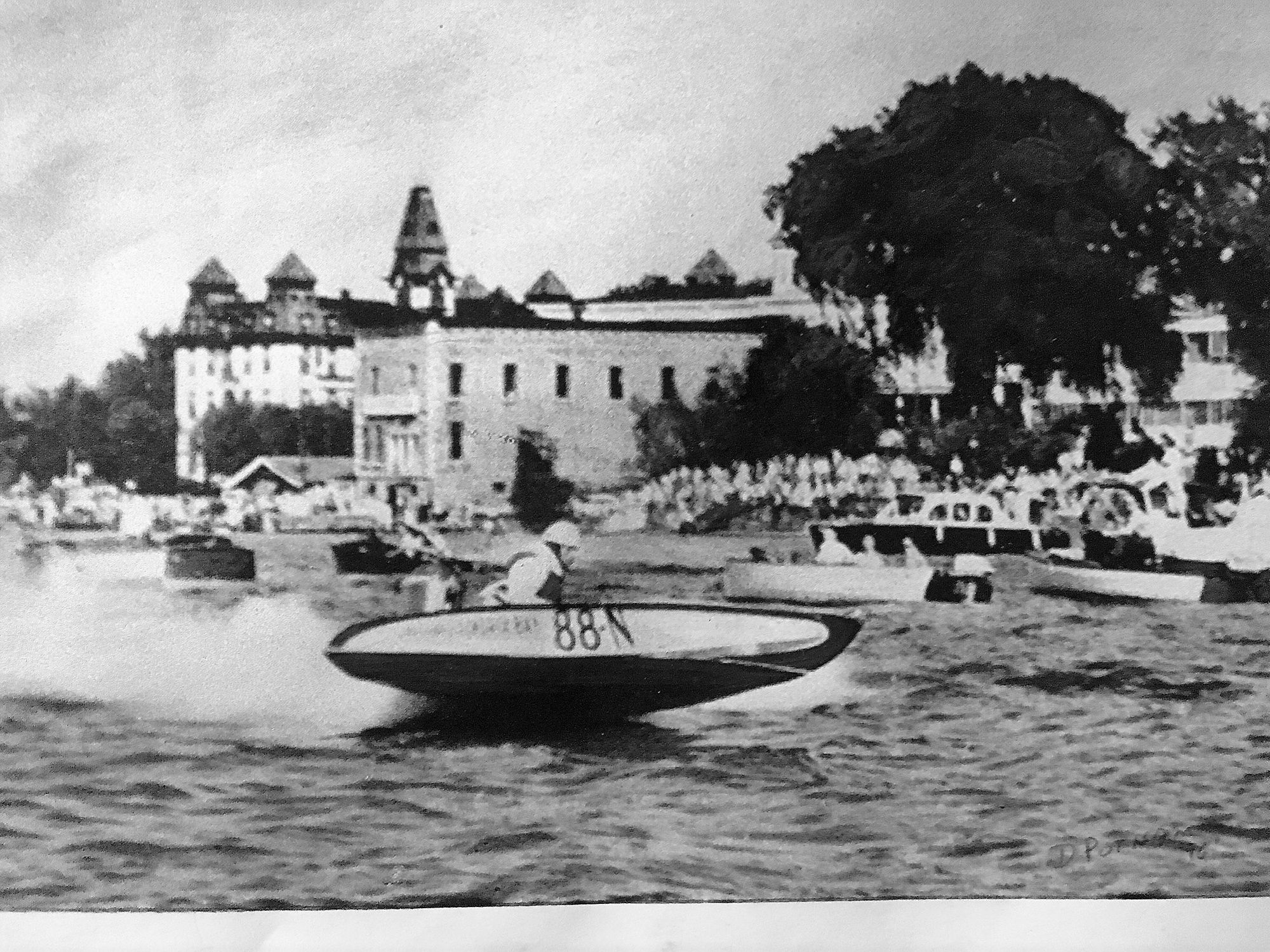
Shortly after the turn of the century, this area of the Thousand Islands hosted the fabulous Gold Cup Races nine times, in a span of ten years. An article published in a 1906 issue of The Motor Boat described the St. Lawrence River as “the home of the speedboat.” The Chippewa Yacht Club hosted the race from 1905 until 1908, but lacking their own clubhouse for entertaining, the race course was moved to the section of River between Alexandria Bay and Clayton. The Thousand Islands Yacht Club and the Frontenac Yacht Club were able to accommodate post-race socializing in their own club houses. Races were hosted by the Thousand Islands Yacht Club in 1909, 1910, 1912, and 1913, with the Frontenac Club doing the honors in 1911.
PDQ II, sponsored by the T.I. Yacht Club, erased the 1904 record of 23.6 mph set on the Hudson River by Standard, with the astonishing new record of 36.8 mph in the 1912 Gold Cup Race held in Alexandria Bay.
The 1930s and 40s heralded the arrival of crowd-pleasing regatta events featuring 135 cu. in. and 225 cu. in. inboards. Spectators lining the shores of Alexandria Bay were also treated to the thrilling maneuvers of outboard hydroplanes and service craft. Dr. Walter G. Robinson was a hometown favorite, who set records and won cups throughout the United States and Canada in his splashy 225 Hydroplane, Mr. Dockit. His speed of 83.00 mph shattered the 1941 world record of 73.170 mph set by Joseph Taggert on the five-mile course at St. Sulpice, Quebec in 1949.
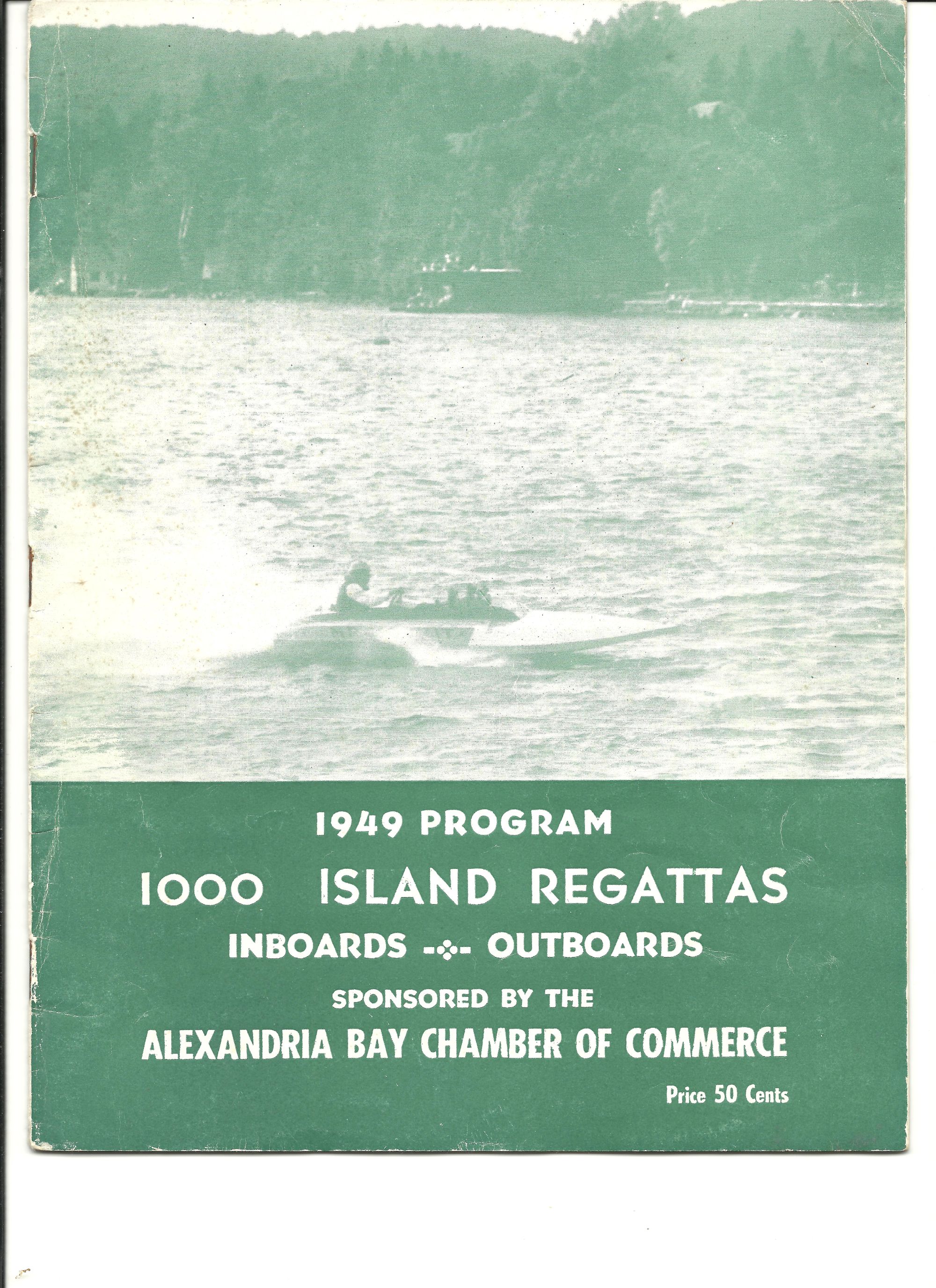
1949 saw the introduction of stock outboards to the summer-long regatta season. Split into six classes according to engine and hull size, these “family” boats opened the field to prospective competitors from all over the Northeast. As their popularity grew, drivers were known to travel from distances as far as the Pacific Coast and Newfoundland, Canada.
The Chamber of Commerce racing committee predicted that Alexandria Bay would become the capital of stock outboard racing. In addition to being known as The Venice of America, the phrase The Yankee Stadium of Speedboat Racing was coined to describe the future of boat racing in the Thousand Islands.
Local marina owner Gerald E. Reed and a group of young racers from the surrounding area formed the Fishers Landing Racing Club in 1949. Races were held in the River communities of Clayton, Fishers Landing, Alexandria Bay, Gananoque, Ont. and Brockville, Ont.
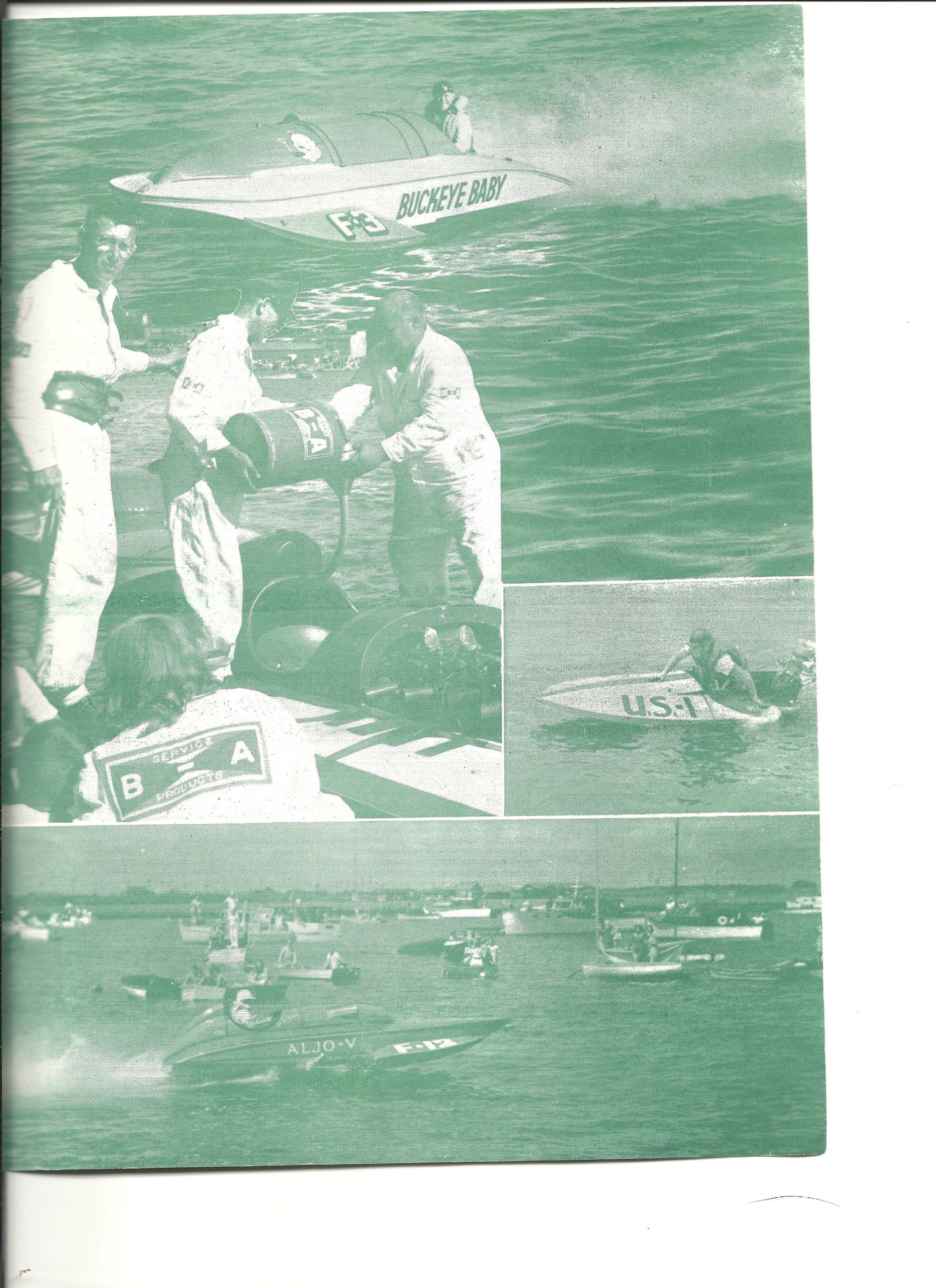
As the popularity of stock racing grew, the idea was spawned to hold the Thousand Islands International Marathon, a hundred-mile course (round trip) stretching between Clayton, Alexandria Bay and Brockville, Ontario.
The first marathon was held in 1954 and the final contest took place in 1972. Top racers of the United States and Canada converged on Alexandria Bay to compete for generous cash prizes and coveted trophies. The Thousand Islands Bridge Trophy was presented to the driver with the most improved time. The Alexandria Bay Chamber of Commerce Trophy was presented to the racer who traveled the greatest distance. The youngest driver was awarded the Carmen Basilio Trophy.
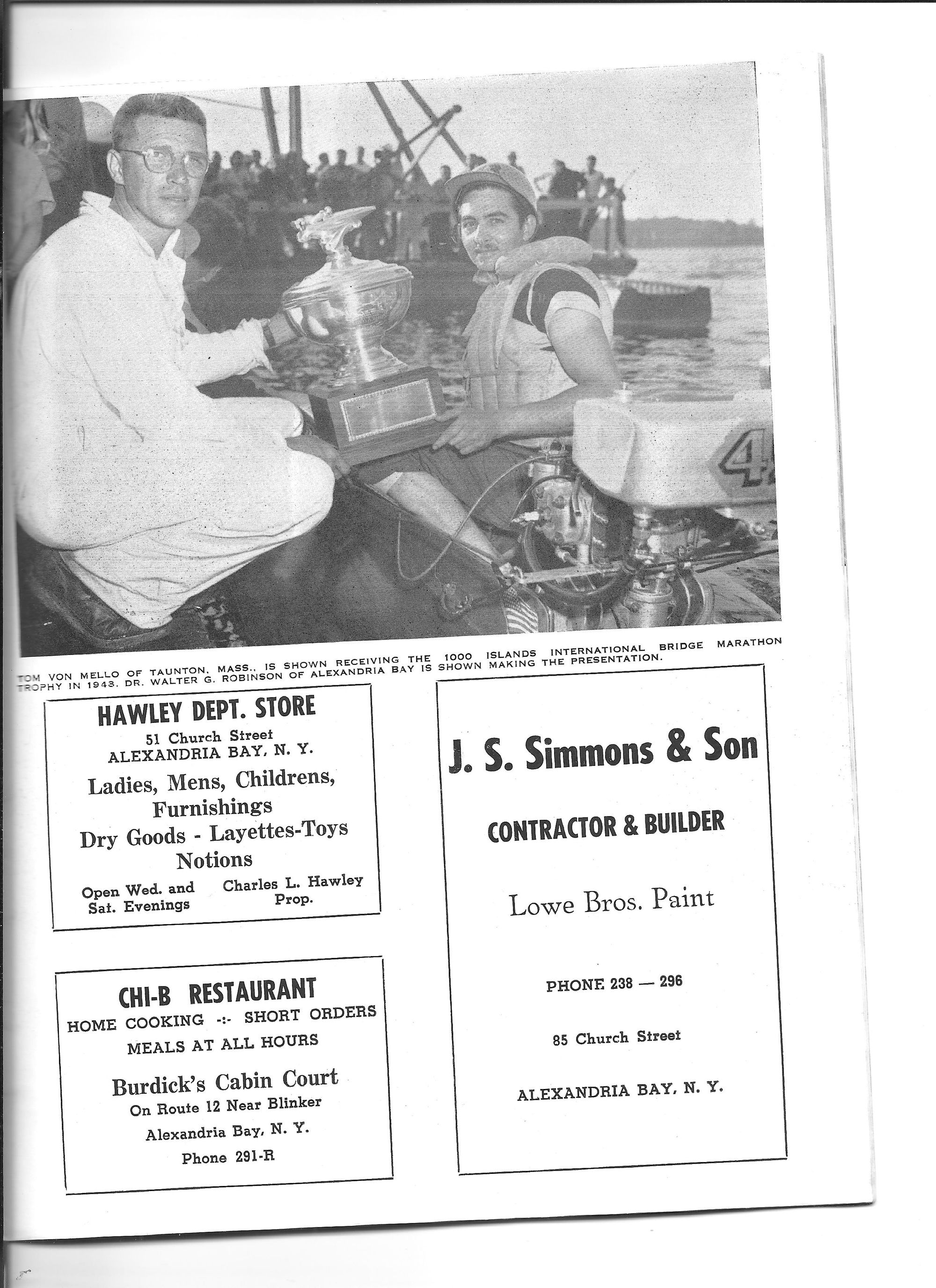
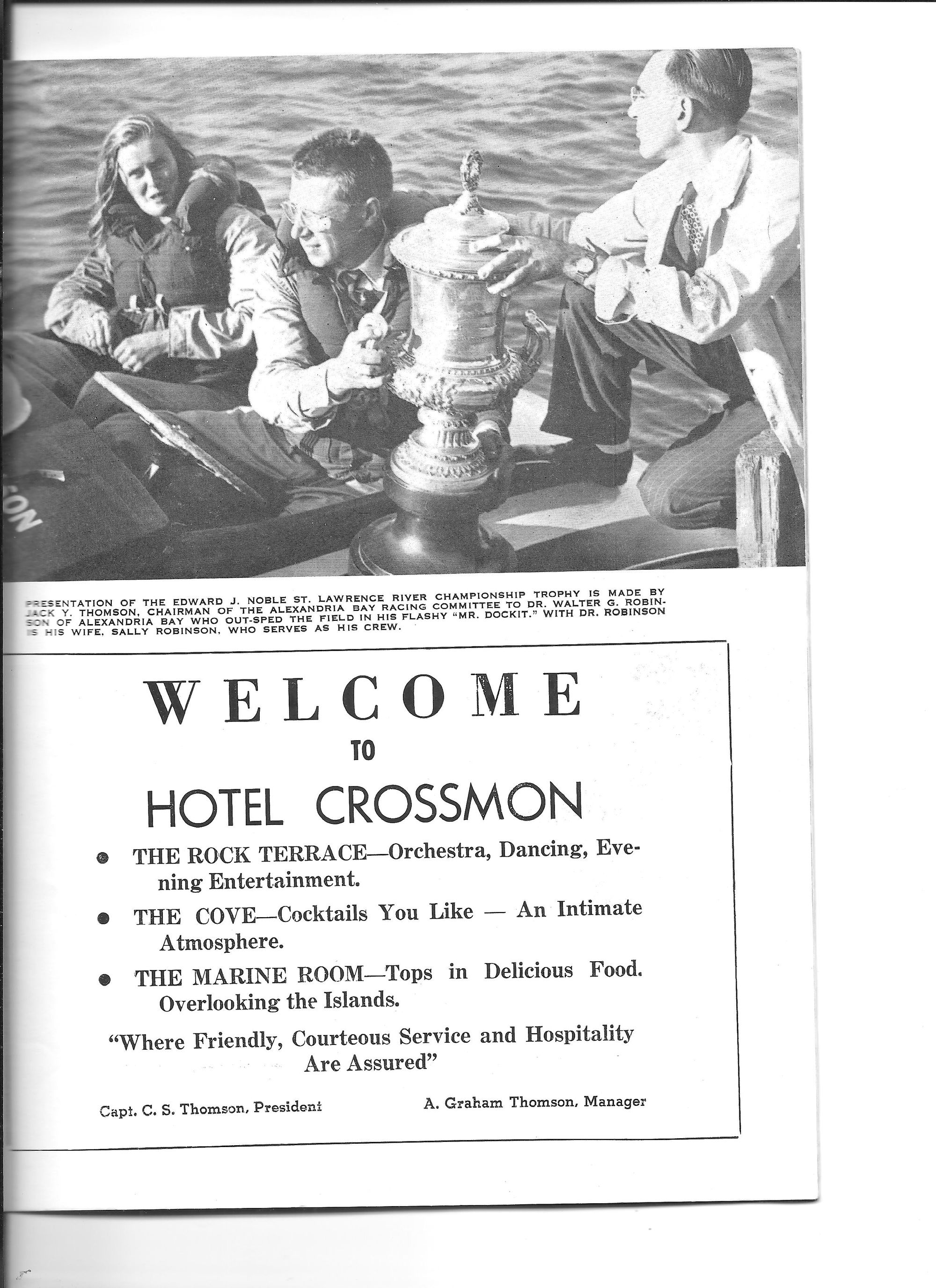
The Thousand Islands International Marathon was recognized as having the largest cash prizes on the circuit. The Chamber of Commerce race committee secured the sponsorship of Mennen Corporation, the producer of popular men’s products, for the 1954 race. The company’s advertising department provided bi-monthly publicity releases from March until the race date, as well as producing a film clip telecast at the Gold Cup races held in Seattle, WA. and aired on national networks. A total of $5000 in cash and prizes were available to the winners, including Mercury motors, Samsonite luggage, Longine watches, and ornate silver serving pieces and accessories. Perhaps the most unusual prize was awarded in 1956. Carl Frink, owner of Frink Snow Plow in Clayton, N.Y. and pioneer of the snow plow industry, donated a snow plow as one of the prizes.
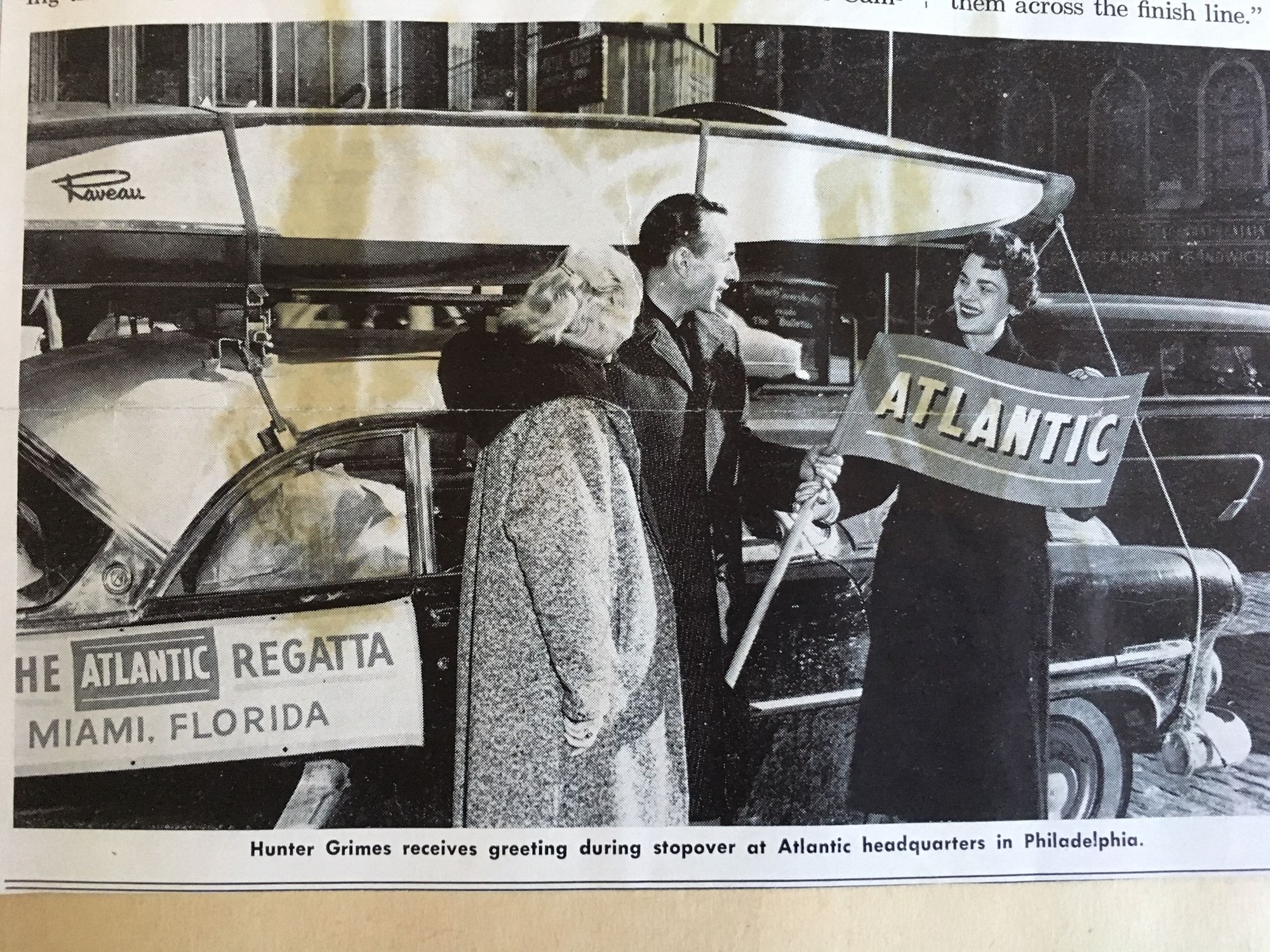
Many local men made a name for themselves as competitors in this grueling race. Some of those who caught the racing bug were David Putnam, Bobby Tait, Danny Hale, Louis Badour, Bill Turgeon, and father-son team Hunter Grimes II and Hunter Grimes III. Fishers Landing was well represented by Doug Reed, Riggs Smith, and Floyd Waterson. A number of other contenders from St. Lawrence, Lewis, and Jefferson County also participated.
Members of the community and Fishers Landing Racing Club showed their support as committee members. Score keepers, time keepers, referees, inspectors, pit crews and chief starter were some of the jobs taken on to run the race. Sponsors of the race over the course of eleven years included Mennen Corporation, Atlantic Refining Company, A-C Spark Plug Company Division of General Motors, WWNY Radio and WCNY TV, and Radio Amateurs of Greater Syracuse (RAGS).
The event was produced by the Alexandria Bay Chamber of Commerce, in co-operation with the 1000 Islands International Council, Clayton Chamber of Commerce, and Brockville Chamber of Commerce. The race was sanctioned by the American Power Boat Association (A.P.B.A).
Rescue and patrol boats and their crews were coordinated by the United States Coast Guard, Griffiss Air Force Campsite personnel, Watertown Power Squadron, and the Brockville Power Squadron.
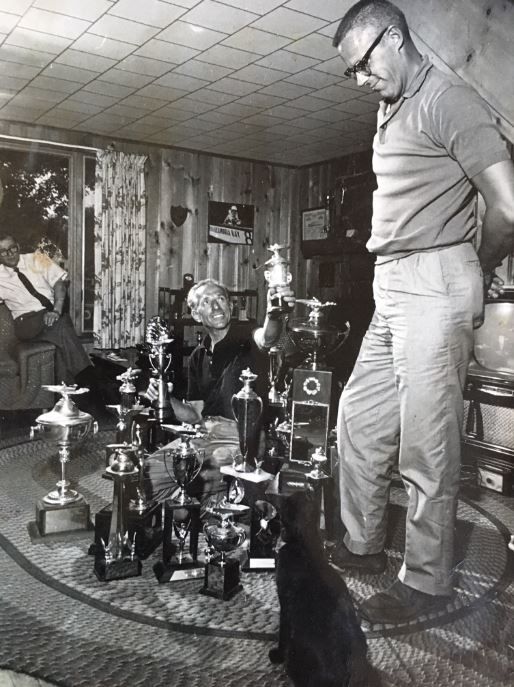
Drivers required much skill and endurance to pilot this challenging course while resting on their knees on the floor of the boat. One hand gripped the steering wheel while the other maintained speed with the hand lever on the side of the boat. Safety equipment was minimal. Helmets, foam rubber knee pads and optional elbow pads were the only protection from constant bouncing off side rails and floor boards. The physical punishment was so debilitating that drivers often had to be lifted from the boat by the pit crew at the end of the race. Wind speed and direction, and water conditions were only part of the challenges to these drivers.
Frequently, pleasure boats lined the course or invaded the lanes, throwing dangerous wakes into the path of the drivers. Drivers were often ejected. In 1959 Hunter Grimes II managed to hook one leg over the side of his boat after being thrown out, pulled himself back in while still underway, and finished as a winner. He beat the odds again in 1964 by hiding behind an island to secure a prime starting spot, not hearing the starting gun, and entering the race twelve minutes late. He managed to make up the time and cross the finish line in first place, flauntingly waving several boat ribs broken during the exhausting run. Johnny Johnson of Kenosha, Wisconsin proved to be equally agile, when he was ejected during the 1963 marathon, but managed to get back in the boat and win the race. Veteran racer Craig DeWald of Reading, Pa., made every newspaper in Northern New York and Southern Ontario when he was photographed paddling his upside-down BU class boat off the course, shortly after flipping at the start of the 1964 marathon.
Marathon week-ends usually kicked-off with a drivers’ meeting and dinner dance at the popular Monticello Hotel. The surge of business was a welcome start of the summer season for local economy. Hotels, motels, cabins, and tourist homes were filled to capacity. Restaurants and stores enjoyed the added clientele as well. The annual return of most of the same drivers, crews and their families led to many new friendships in the community.
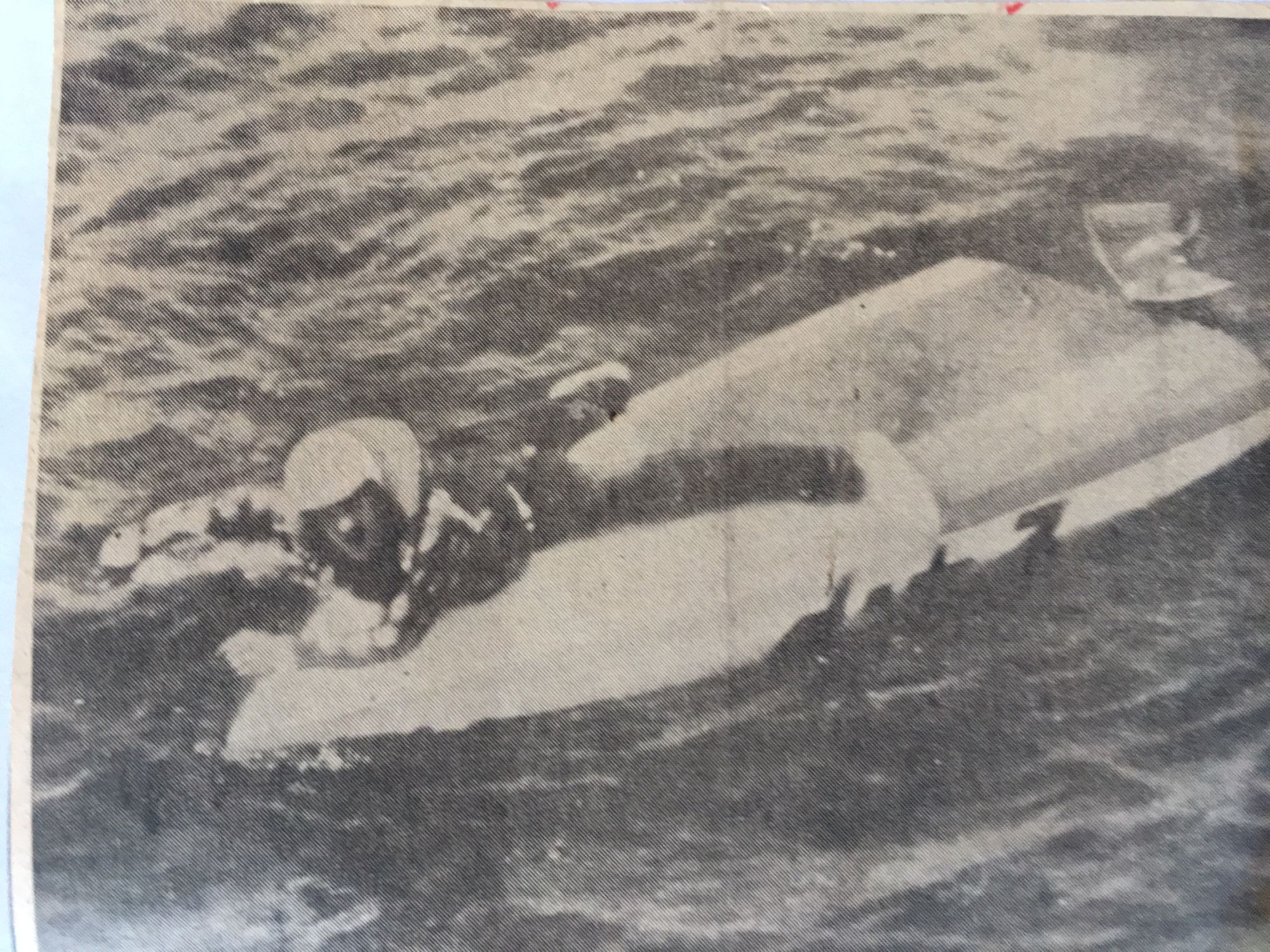
The award ceremony at Convention Hall wrapped up the exciting week-end for drivers, pit crews and race fans. The highly regarded Thousand Islands Bridge Trophy was presented to the driver with most improved time over the previous year’s standing, but was always returned for the next marathon event. The racer traveling the greatest distance was awarded the Alexandria Bay Chamber of Commerce Trophy. The youngest driver received the Carmen Basilio Trophy.
The increase of St. Lawrence Seaway shipping traffic and popularity of bigger, faster boats and jet skis all contributed to the end of this popular event. Providing adequate safety became an issue. It was noted in an article published by the Watertown Daily Times on June 15, 1964, “thousands looked on as smart-alecks sped high throttle up and down the St. Lawrence River Sunday afternoon, challenging the marathon racers in their frail craft…….High speed craft, many filled with youngsters, disregarded all appeals for safety, to challenge the racers in this high speed spectacle…. Racers traveling 50 mph is better than 100 mph on a highway.”
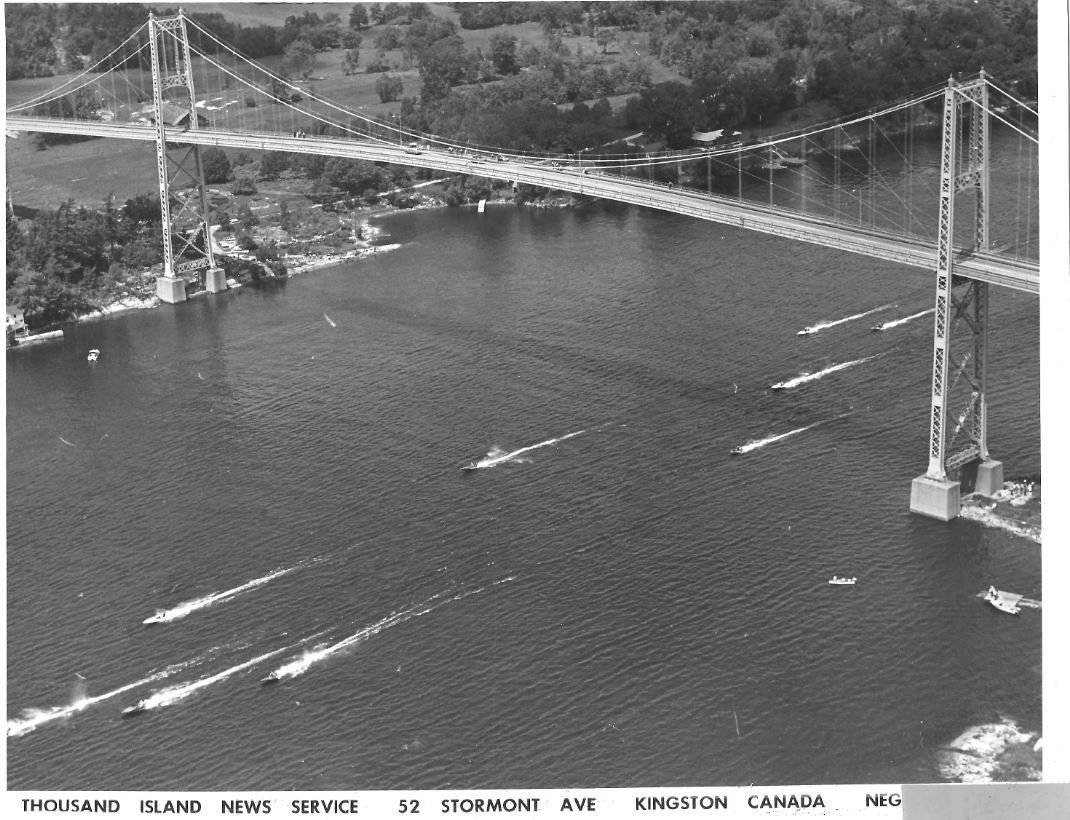
Racing changed dramatically in the following years. The fourteenth marathon was run in 1967. There was no race scheduled in 1968 due to Seaway repair projects. The 1969 race was scheduled, but cancelled when the Coast Guard did not provide required permits. Three years elapsed before the final race took place in 1972. This closed course race ran in front of Alexandria Bay but excluded stock outboards, due to the danger of their size, speed, and ability to maneuver safely in the restricted area.
Sixty-three years of spectators lining the shores of Alexandria Bay, to view the excitement and comradery of boat racers vying for titles, trophies, and personal goals drew to a close.
Epilogue
The Fishers Landing Racing Club went into semi-retirement in 1980, due to the rising costs of insurance, fuel, and upgrading equipment, as mandatory safety regulations were put in place. Today’s drivers are required to wear Kevlar lined “cut suits”, full helmets with face shields, and regulation life jackets. Recently adopted A.P.B.A. rules will require Kevlar gloves, socks, and boots in the 2019 racing season.
Some of the original members joined a new generation of racers to reorganize the club in 1992. The club hosted the first Crystal Lake Regatta in 1997. This closed course race has become an attractive event held the second week-end in September; at the end of the racing season which begins in Florida in mid-winter and gradually moves north as the weather warms. 2018 marked the twenty second year at the Redwood, N.Y. race site.
The club presents the following trophies: The Donnie Reed Memorial Trophy, The Eric Wolf Memorial Trophy, The Bill Turgeon Memorial Trophy, The Hunter F. Grimes II Memorial Trophy, and the Gerald Reed Memorial Trophy.
The Cornwall Brothers Store Museum will pay tribute to the Thousand Islands International Marathon as the first exhibit to be featured in the newly opened cellar exhibit gallery in the summer of 2019. This marks the 110th anniversary of the first Gold Cup Race hosted and viewed from the shores of Alexandria Bay, and the 70th anniversary of the first stock outboard racing in the 1949 Regatta.
By Martha Grimes
Martha Grimes was born and raised in Alexandria Bay. She and her late husband Hunter, raised a son and daughter to love and appreciate the River as much as they do. During her career as an educator, Martha taught various Primary Level grades at Alexandria Central School. Since retiring she has been actively involved with the Alexandria Township Historical Society and the interpretation of the Cornwall Brothers Store & Museum, in Alexandria Bay, NY.
Posted in: Volume 14, Issue 3, March 2019, Sports, History, People
Please click here if you are unable to post your comment.
